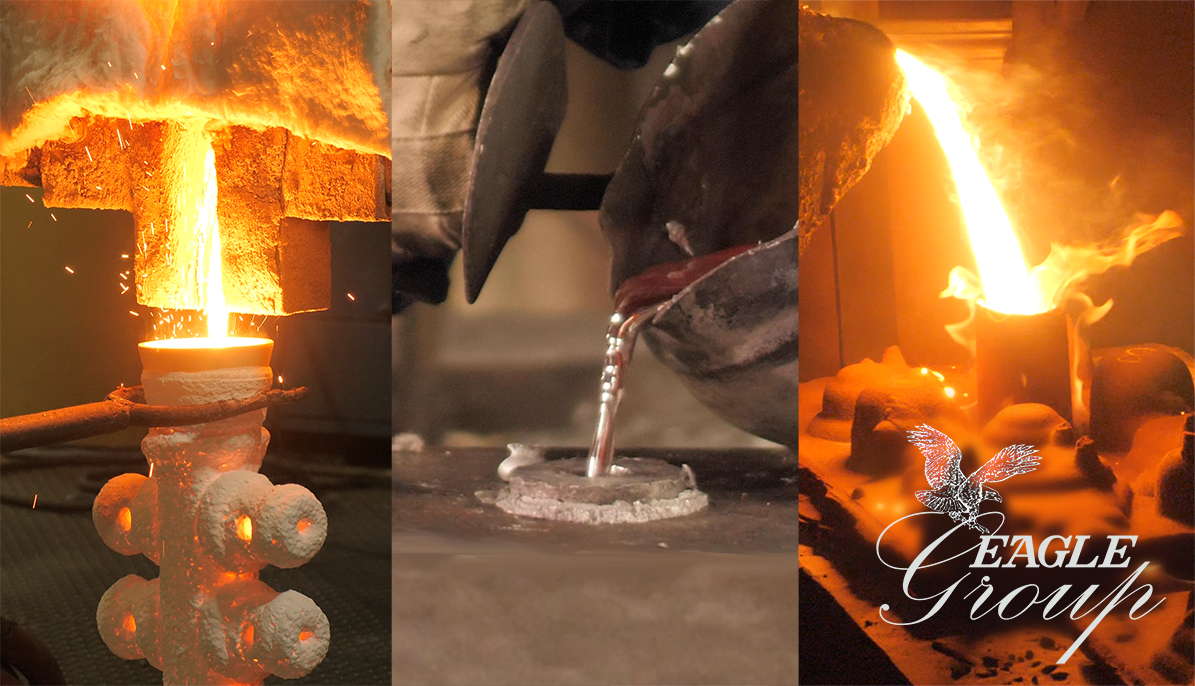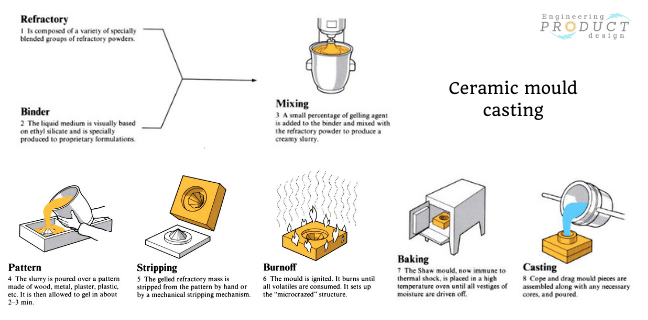Metal Castings and their enduring importance in today’s global industries
Wiki Article
Recognizing the Steel Castings Process: A Comprehensive Overview for Beginners
The Metal Casting procedure is a basic technique in manufacturing that changes molten steel right into strong forms. Beginners must realize the different methods entailed, such as sand spreading and die casting. Comprehending the products, style concepts, and safety and security actions is similarly crucial. Each aspect plays an important function in achieving effective outcomes. As one browses these ins and outs, the question of just how to optimize each action for boosted outcomes becomes significantly significant.The Fundamentals of Steel Casting
Metal Casting has evolved over centuries, its essential concepts continue to be consistent and indispensable to the manufacturing procedure. At its core, Metal Casting entails the change of liquified steel into strong things through various strategies. The procedure begins with the production of a mold, which specifies the form of the final item. When the mold and mildew is prepared, steel is heated to its melting point and put into the cavity. After cooling, the metal solidifies, taking the shape of the mold.There are a number of casting methods, including sand casting, investment casting, and pass away spreading, each with unique advantages and applications. The choice of technique relies on factors such as production quantity, product kind, and desired precision. Once cast, the end product might go through extra procedures like machining or surface therapy to attain the required finish and requirements. Understanding these basics is important for anybody thinking about the area of Metal Casting.

Understanding Products Made Use Of in Steel Casting
Materials play an important duty in the Metal Casting procedure, affecting the end product's buildings and performance. Various steels are made use of, including aluminum, bronze, iron, and steel, each offering unique qualities matched for particular applications. Light weight aluminum is lightweight and corrosion-resistant, making it suitable for auto components. Iron, particularly cast iron, is preferred for its exceptional wear resistance and sturdiness. Steel supplies high toughness and versatility, usually utilized in hefty machinery elements. Bronze, understood for its deterioration resistance and machinability, is typically employed in marine applications.In addition to the metals, various casting materials, such as sand, plaster, and ceramic, are utilized to produce molds. Sand casting, one of the most common technique, utilizes silica sand as a result of its thermal security and capacity to create detailed forms. Plaster and ceramic molds provide better information but might call for even more complex processes. The choice of products straight influences the efficiency, price, and top quality of the spreading operation.
The Design Process: From Idea to Blueprint
The design procedure in Metal Casting starts with the first principle advancement, where concepts are created and reviewed. This is adhered to by the application of CAD modeling strategies, enabling for accurate visualizations of the design. Finally, the blueprint finalization steps assure that all requirements are precisely documented for production.Initial Concept Advancement
Initial idea development notes a crucial phase in the Metal Casting process, where ideas transform right into substantial styles. Throughout this phase, designers team up with stakeholders and designers to brainstorm and refine initial concepts. They consider elements such as functionality, visual appeals, and manufacturability, making certain that the style meets the needed specs and efficiency standards. Illustrations and outlines are developed to imagine the ideas, permitting for initial analyses of expediency and cost-effectiveness. This phase also includes identifying products and possible spreading methods that line up with the style goals. Eventually, preliminary principle development lays the foundation for an extensive blueprint, guiding the subsequent stages of the spreading procedure and making certain a successful change from idea to reality.CAD Modeling Techniques
Transforming principles right into exact layouts, CAD modeling methods play a pivotal function in the Metal Casting procedure. These methods make use of sophisticated software program to create detailed three-dimensional designs that accurately reflect the designated item. By utilizing devices such as parametric modeling, strong modeling, and surface area modeling, developers can adjust dimensions and forms easily. CAD systems additionally facilitate simulation and analysis, enabling the identification of prospective imperfections before production starts. This positive method lowers product waste and enhances the style for manufacturability. Additionally, CAD versions can be conveniently customized, making it possible for fast iterations based on feedback. Basically, CAD modeling functions as the foundation of the layout process, bridging the space between first principles and the eventual production-ready designs.Plan Finalization Steps
Following the creation of thorough CAD designs, the next stage involves plan completion, which is important in equating digital layouts right into workable strategies for manufacturing. This procedure begins with examining the CAD designs for precision and compliance with requirements. When verified, the dimensions, resistances, and product requirements are thoroughly detailed to assure clearness. Integrating comments and notes helps communicate important details relating to casting procedures, surface coatings, and assembly needs. The settled plan goes through a rigorous approval process, usually entailing partnership with engineers and manufacturing teams to attend to any possible concerns. Besides alterations are made and approvals acquired, the blueprint is officially released, functioning as the foundational record for the subsequent phases of Metal Casting, consisting of pattern production and mold and mildew style.The Steel Casting Methods Described

Metal Casting techniques incorporate a selection of approaches made use of to form liquified steel right into preferred kinds. These techniques vary according to the kind of material, complexity of the style, and production quantity. Sand casting is just one of the most usual methods, including the development of a mold from sand to hold the liquified metal. Financial investment spreading, or lost-wax casting, permits detailed designs by utilizing a wax pattern that is melted away. Pass away casting utilizes high-pressure shot of liquified metal into a mold and mildew, ideal for automation. Various other methods include long-term mold and mildew casting, which utilizes multiple-use mold and mildews, and centrifugal casting, where rotational pressures help in loading the mold and mildew. Each strategy has its benefits and applications, making it essential for suppliers to choose the proper technique based upon their details requirements and requirements. Understanding these methods is crucial for anyone associated with the Metal Casting procedure.
Finishing Procedures: Enhancing Your Casted Item

Finishing procedures play a crucial function in enhancing the top quality and look of casted products. Numerous surface area therapy strategies, such as polishing and layer, are utilized to enhance longevity and looks. Furthermore, top quality assessment approaches guarantee that the last item fulfills specified requirements and performance requirements.
Surface Area Treatment Techniques
A selection of surface therapy methods play an essential role in improving the high quality and long life of casted products. These techniques consist of methods such as shot blasting, brightening, and covering. Shot blowing up efficiently removes surface blemishes, improving the functional and aesthetic characteristics of the spreading. Polishing provides a smooth surface, which is especially important for ornamental applications and parts requiring very little friction. Layer strategies, such as electroplating or powder finishing, offer extra security versus deterioration and wear, making sure sturdiness. Moreover, check this site out surface treatments can enhance bond for subsequent processes, such as painting or bonding. By employing these techniques, suppliers can accomplish superior surface area top quality, which is critical for the efficiency and life-span of Metal Casting in numerous applications.Top Quality Examination Approaches
Efficient top quality evaluation techniques are essential for ensuring the integrity and performance of casted products after the ending up procedures. Different strategies are employed to examine the quality of Metal Casting, consisting of visual evaluation, dimensional checks, and non-destructive testing (NDT) Aesthetic examination permits the recognition of surface area flaws, while dimensional checks ensure that products satisfy specified resistances. NDT techniques, such as ultrasonic screening and radiographic inspection, provide much deeper understandings into inner honesty without damaging the spreadings. Additionally, mechanical testing, such as tensile and firmness examinations, examines material buildings - Metal Castings. By employing a mix of these techniques, manufacturers can improve product quality and integrity, eventually leading to better customer fulfillment and reduced manufacturing pricesSafety And Security Considerations in Metal Casting
While the Metal Casting procedure supplies many benefits, it likewise presents a variety of safety dangers that need to be very carefully managed. Workers in casting centers are subjected to heats, liquified steels, and hazardous products, which can cause severe injuries if appropriate precautions are not taken. Individual safety tools (PPE) such as heat-resistant handwear covers, deal with shields, and safety garments is crucial to reduce risks.Additionally, the visibility of fumes and dirt demands correct ventilation systems to guarantee air top quality - Wisconsin Aluminum Foundry. Regular training on safety methods is necessary for all staff members to acknowledge possible hazards and react effectively. Emergency treatments should be established, consisting of fire safety measures and very first help accessibility. Maintenance of equipment and appropriate handling of products additionally add to a more secure working setting. By focusing on these safety and security considerations, Metal Casting operations can protect their workforce and maintain effective production procedures
Frequently Asked Questions
What Are the Ecological Impacts of Metal Casting?
Metal Casting can cause environmental influences such as air and water contamination, resource exhaustion, and power intake. In addition, inappropriate waste monitoring and exhausts from shops add to ecological disturbances and wellness dangers for nearby neighborhoods.How Do I Choose the Right Steel for Casting?
To choose the best steel for spreading, one click to find out more need to think about factors such as mechanical residential or commercial properties, rust resistance, thermal conductivity, and price. Examining the designated application and environmental problems is necessary for excellent choice.What Are the Typical Flaws in Metal Casting?
Typical issues in Metal Casting include porosity, shrinking, sand inclusion, and misruns. These problems usually arise from improper product choice, inadequate design, or imperfections in the casting procedure, impacting the final item's top quality and efficiency.
How Can I Boost My Steel Casting Abilities?
To boost Metal Casting skills, one ought to practice regularly, research casting methods, examine previous projects for issues, seek responses from skilled wheels, and continuously explore different products and methods to improve efficiency and understanding.What Is the Price of Beginning a Steel Spreading Business?
Beginning a metal casting business commonly calls for a first investment of $5,000 to $50,000, relying on tools, products, and facility prices. Variables like location and range can greatly influence overall start-up expenditures.The Metal Casting procedure is a fundamental method in producing that changes molten metal right into solid kinds. Novices navigate to this site need to comprehend the various techniques included, such as sand casting and pass away spreading. There are a number of casting methods, consisting of sand spreading, investment casting, and pass away casting, each with distinct benefits and applications. Financial investment casting, or lost-wax casting, permits for complex designs by utilizing a wax pattern that is melted away. Other methods include long-term mold and mildew casting, which utilizes reusable molds, and centrifugal spreading, where rotational pressures help in filling the mold and mildew.
Report this wiki page